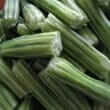Background
- Moringa has been used in a variety of industrial, folkloric, dietary, and medicinal practices. For cooking, moringa has been used as a frying oil and food seasoning and has been eaten as part of curries and salads. Due to its many healthy components, moringa has also been used as a nutritional supplement. Such components include amino acids, antioxidants, fat, minerals, protein, and vitamins. Moringa is thought to contain more vitamin C than oranges, more potassium than bananas, more iron than spinach, and more protein and calcium than milk.
- The use of moringa in traditional medicine reportedly dates back to ancient times. In spite of the many historical uses of moringa, high-quality research on its proposed health benefits is currently lacking. Limited research in humans suggests that moringa may be used to treat asthma, malnutrition, and lack of vitamin A, and to purify water. In other research, moringa leaf was shown to increase breast milk production in the early period after childbirth. Further research is needed in these areas.
References
- Agrawal B, Mehta A. Antiasthmatic activity of Moringa oleifera Lam: a clinical study. Indian J Pharmacol 2008;40(1):28-31. View Abstract
- Anwar F, Latif S, Ashraf M, et al. Moringa oleifera: a food plant with multiple medicinal uses. Phytother Res 2007;21(1):17-25. View Abstract
- Atawodi SE, Atawodi JC, Idakwo GA, et al. Evaluation of the polyphenol content and antioxidant properties of methanol extracts of the leaves, stem, and root barks of Moringa oleifera Lam. J Med Food 2010;13(3):710-716. View Abstract
- Beltran-Heredia J, Sanchez-Martin J. Improvement of water treatment pilot plant with Moringa oleifera extract as flocculant agent. Environ Technol 2009;30(6):525-534. View Abstract
- Bose CK. Possible role of Moringa oleifera Lam. root in epithelial ovarian cancer. MedGenMed 2007;9(1):26. View Abstract
- Devaraj VC, Asad M, Prasad S. Effect of leaves and fruits of Moringla oleifera on gastric and duodenal ulcers. Pharm Biol 2007;45:332-338.
- Ejoh RA, Dever JT, Mills JP, et al. Small quantities of carotenoid-rich tropical green leafy vegetables indigenous to Africa maintain vitamin A status in Mongolian gerbils (Meriones unguiculatus). Br J Nutr 2010;103(11):1594-1601. View Abstract
- Firth J, Balraj V, Muliyil J, et al. Point-of-use interventions to decrease contamination of drinking water: a randomized, controlled pilot study on efficacy, effectiveness, and acceptability of closed containers, Moringa oleifera, and in-home chlorination in rural South India. Am J Trop Med Hyg 2010;82(5):759-765. View Abstract
- Goyal BR, Goyal RK, Mehta AA. Investigation into the mechanism of anti-asthmatic action of Moringa oleifera. J Diet Suppl 2009;6(4):313-327.
- Jaiswal D, Kumar Rai P, Kumar A,et al. Effect of Moringa oleifera Lam. leaves aqueous extract therapy on hyperglycemic rats. J Ethnopharmacol 2009;123(3):392-396. View Abstract
- Jilcott SB, Ickes SB, Ammerman AS, et al. Iterative design, implementation and evaluation of a supplemental feeding program for underweight children ages 6-59 months in Western Uganda. Matern Child Health J 2010;14(2):299-306. View Abstract
- Muyibi SA, Alfugara AMS. Treatment of surface water with Moringa Oleifera seed extract and alum - a comparative study using a pilot scale water treatment plant. Int J Environ Stud 2003;60(6):617-626.
- Nandave, M., Ojha, S. K., Joshi, S., Kumari, S., and Arya, D. S. Moringa oleifera leaf extract prevents isoproterenol-induced myocardial damage in rats: evidence for an antioxidant, antiperoxidative, and cardioprotective intervention. J Med Food 2009;12(1):47-55. View Abstract
- Sulaiman MR, Zakaria ZA, Bujarimin AS, et al. Evaluation of Moringa oleifera aqueous extract for antinociceptive and anti-inflammatory activities in animal models. Pharm Biol 2008;46:838-845.
- Thurber MD, Fahey JW. Adoption of Moringa oleifera to combat under-nutrition viewed through the lens of the "diffusion of innovations" theory. Ecol Food Nutr 2009;48(3):212-225. View Abstract







